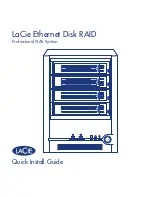
Connect the serial and parallel cables
8
Serial connector 1
(FS1 front)
Operator
panel
Rear of the
system
Rear of the
system
Rear of the
system
Serial port
number
Location
Examples of applicable usage
Serial connector 1
(S1 rear)
Serial connector 2
(S2)
Serial connector 3
(S3)
Service Agent, PDA system-management applications (for example, handheld
devices or mobile computers), service processor menus, ASCII terminal for AIX
console, and modems
Service Processor menus, Service Agent, PDA system management applications
(interface cable required), ASCII Terminal for AIX Console, and Modems
Service Processor menus, HACMP, ASCII Terminal for AIX Console, and Modems
HACMP, UPS (uninterruptible power supply), ASCII Terminal for AIX Console,
and Modems
Front View
1a
R
R
Rear View
1
2
3
4
1
Serial Connector 1
1a
Serial Connector 1 (RJ-48 connector)
2
Serial Connector 2
3
Serial Connector 3
4
Parallel Connector
Illustration Key
Note:
Do not use serial connector S1 to run HACMP or to attach a UPS. If you are configuring your system
to run HACMP with a UPS attached, you must connect the HACMP cable to serial port S2 and the UPS
cable to serial port S3.
Do not
run a UPS connected to serial port S2. If you decide to disconnect HACMP,
you
must
reset the service processor using the service processor pinhole reset switch before running
another application. The service processor pinhole reset switch is located on the operator panel. Step 16
shows the location of the service processor reset switch.
Cabling to the serial ports:
This system is equipped with two serial connectors identified as serial connector 1. One is located
at the front of the system (FS1) and the other (S1) is located at the rear of the system.
Use an RJ-48 to 9-pin converter cable to access the front serial connector FS1.
When using FS1, the rear serial connector (S1) is deactivated.
Use a 9-pin serial cable when you activate the rear serial connector S1. If you are attaching to a 25-pin
device, use a 9-pin to 25-pin serial converter cable. The converter cable is a customer-purchased option.
If you have a remote ASCII terminal, connect it through an external modem to serial connector S1.
Connect a local ASCII terminal to serial connector S2 or serial connector S3.
You can connect additional serial devices to the two remaining serial ports (S2 and S3), which are
located at the rear of the system.
Cabling to the parallel port:
If you have a parallel device, such as a printer, connect it to the parallel connector.






























